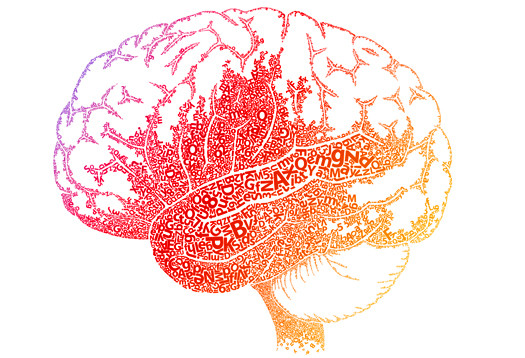By analysing MRI images of the brain with an elegant mathematical model, it is possible to reconstruct thoughts more accurately than ever before. In this way, researchers from Radboud University Nijmegen have succeeded in determining which letter a test subject was looking at. The journal Neuroimage has accepted the article, which will be published soon.
Functional MRI scanners have been used in cognition research primarily to determine which brain areas are active while test subjects perform a specific task. The question is simple: is a particular brain region on or off? A research group at the Donders Institute for Brain, Cognition and Behaviour at Radboud University has gone a step further: they have used data from the scanner to determine what a test subject is looking at. The researchers ‘taught’ a model how small volumes of 2x2x2 mm from the brain scans – known as voxels – respond to individual pixels. By combining all the information about the pixels from the voxels, it became possible to reconstruct the image viewed by the subject. The result was not a clear image, but a somewhat fuzzy speckle pattern. In this study, the researchers used hand-written letters.
Prior knowledge improves model performance
‘After this we did something new’, says lead researcher Marcel van Gerven. ‘We gave the model prior knowledge: we taught it what letters look like. This improved the recognition of the letters enormously. The model compares the letters to determine which one corresponds most exactly with the speckle image, and then pushes the results of the image towards that letter. The result was the actual letter, a true reconstruction.’
‘Our approach is similar to how we believe the brain itself combines prior knowledge with sensory information. For example, you can recognise the lines and curves in this article as letters only after you have learned to read. And this is exactly what we are looking for: models that show what is happening in the brain in a realistic fashion. We hope to improve the models to such an extent that we can also apply them to the working memory or to subjective experiences such as dreams or visualisations. Reconstructions indicate whether the model you have created approaches reality.’
Improved resolution; more possibilities
‘In our further research we will be working with a more powerful MRI scanner,’ explains Sanne Schoenmakers, who is working on a thesis about decoding thoughts. ‘Due to the higher resolution of the scanner, we hope to be able to link the model to more detailed images. We are currently linking images of letters to 1200 voxels in the brain; with the more powerful scanner we will link images of faces to 15,000 voxels.’
Linear reconstruction of perceived images from human brain activity, Neuroimage, in press
S. Schoenmakers, M. Barth, T.Heskes, M.A.J. van Gerven
Donders Institute for Brain, Cognition and Behaviour
Institute for Computing and Information Sciences
Radboud University Nijmegen
Story Source:
The above story is based on materials provided by Radboud University Nijmegen.





